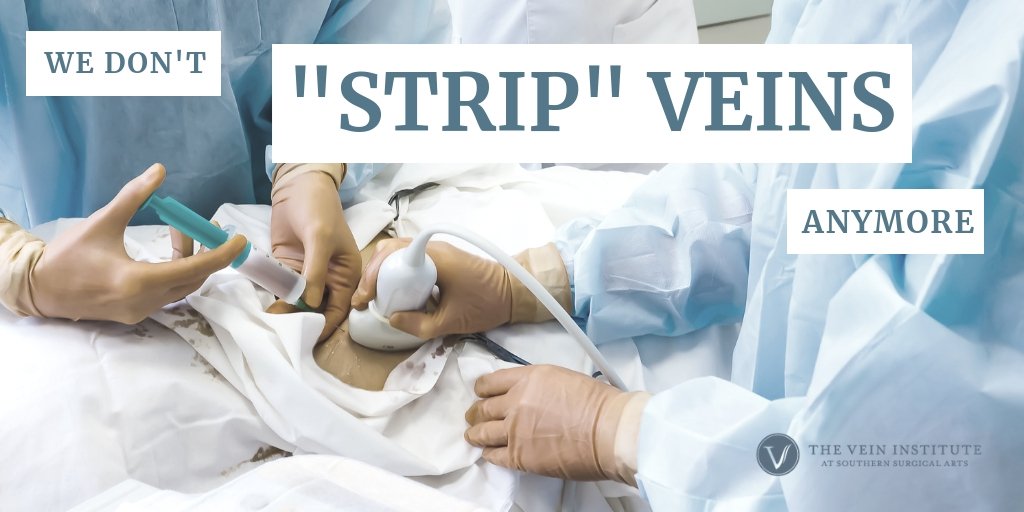Fear of old-style vein stripping has caused countless men and women to put off doing anything about their varicose veins and leg pain. If you’re one of those people, you’ll be happy to know we don’t strip veins anymore. There is absolutely no reason to live with your symptoms. And there are serious reasons to address them right away.
It’s Dangerous to Ignore Vein Problems
Why? Your problems will only get worse with time. It is a slow, insidious process. Allowed to continue untreated, it can eventually result in end-organ damage and the organ that is damaged is the skin. Your skin pigment can turn to a rusty brown color near your ankles, and you could develop skin breakdown known as venous ulcerations.
- Leg pain – aching, throbbing, burning, etc.
- Leg swelling
- Painful, bulging varicose veins
- Skin damage/pigment skin changes
- Venous ulcerations
Here at The Vein Institute, the most common problems we see are:
But you could have other symptoms, too, ranging from unsightly to severe:
- Spider veins
- Bulging veins on the back of your hands or feet
- Restless Leg Syndrome, which can be caused by vein problems
- Night cramps
- Fatigue
- Numbness
Whatever your symptoms, we urge you to schedule a consultation as soon as possible. Why suffer any longer when you can get treatment to alleviate your symptoms and get peace of mind, knowing you’ve stopped the progress of your vein disease? Even “minor” symptoms can indicate underlying vein disease.
In fact, many patients don’t even realize they have pain until they’re specifically asked about it or they start getting treatment. Typically, we treat more severe problems one leg at a time. Patients say they’re surprised how much their untreated leg bothers them, now that they have something to compare it to. They had no idea they were in such pain.
Modern Treatment Methods Have Replaced Stripping
There are several types of treatments we use to correct vein problems, depending on the severity of the issue:
- Modern Endovenous thermal ablation techniques have replaced old-fashioned vein stripping. These techniques use heat energy, either laser or radiofrequency, to permanently damage incompetent superficial veins. These damaged veins will then be absorbed by the body, during the healing process.
- Microphlebectomy is used to eliminate larger bulging surface veins. It is a highly targeted technique where the surgeon makes tiny 2-3mm micro-incisions in the skin in order to separate the damaged vein from surrounding tissue. That section of the vein can then be removed using a small, hooked instrument. This method is very efficient, even for quite large varicose veins.
- Sclerotherapy is the gold standard for treating spider veins. It can also be used to remove unwanted bulging veins on the back of the hands and feet without making any incisions. Diseased vein sections are injected with a chemical that causes them to collapse, then the body simply reabsorbs them over time.
- Ohmic therapy treatments using the ThermoClear PRO device are very effective for treating fine spider veins, broken capillaries, and small (cherry) angiomas. These treatments are used commonly on the face and legs for difficult to treat or stubborn veins that have shown resistance to sclerotherapy and IPL treatments.
The range of these procedures allows us to create a treatment plan that is individually tailored to each patient.
No Hospitalization Required
Today’s vein treatment methods are all minimally-invasive surgical procedures, performed right here in our office at The Vein Institute. Average procedure time is just 30 to 60 minutes. Patients can choose localized numbing, although most opt for mild sedation. Following the procedure, most people simply use an over-the-counter pain reliever such as ibuprofen.
Recovery is nothing like the old days, either. Most patients take a couple of days off, depending on the magnitude of their procedure and their personal preference. You’ll be up and around the same day but will avoid vigorous exercise. Within a week, most patients can be back to their regular exercise routine.
Patients are often nervous at first, says The Vein Institute’s Dr. Vince Gardner, so he does a slow walk-through with them to explain their procedure before beginning. The patient may feel a few sensations/needle sticks, he says, but most feel little to no pain. By the end of the procedure, patients are surprised by how well it went. And at their post-operative office visit, they are surprised by how good they feel. When it’s time for subsequent procedures (if required), their anxiety is gone.
So what are you waiting for? Let’s get those veins fixed, and get rid of your pain.

